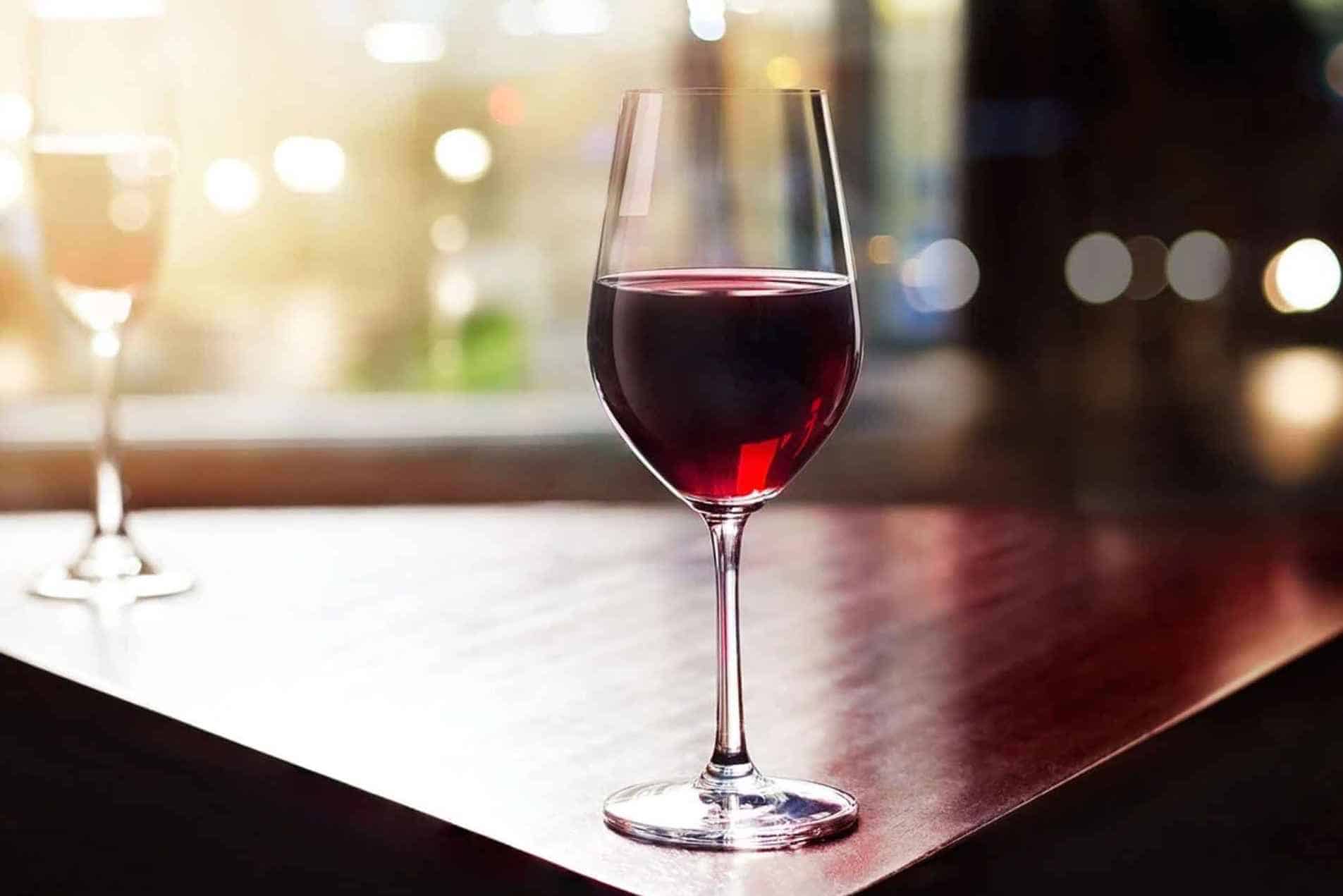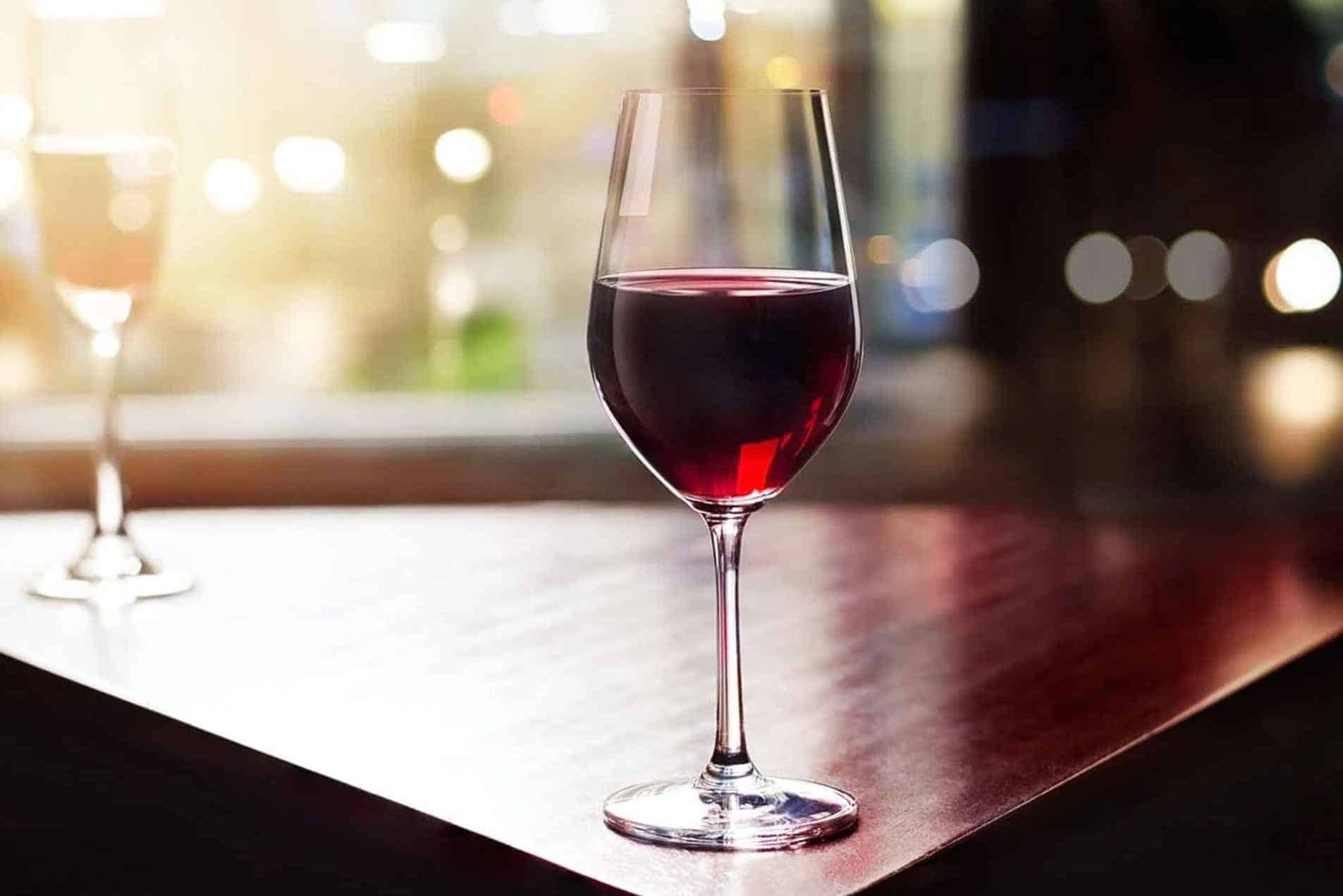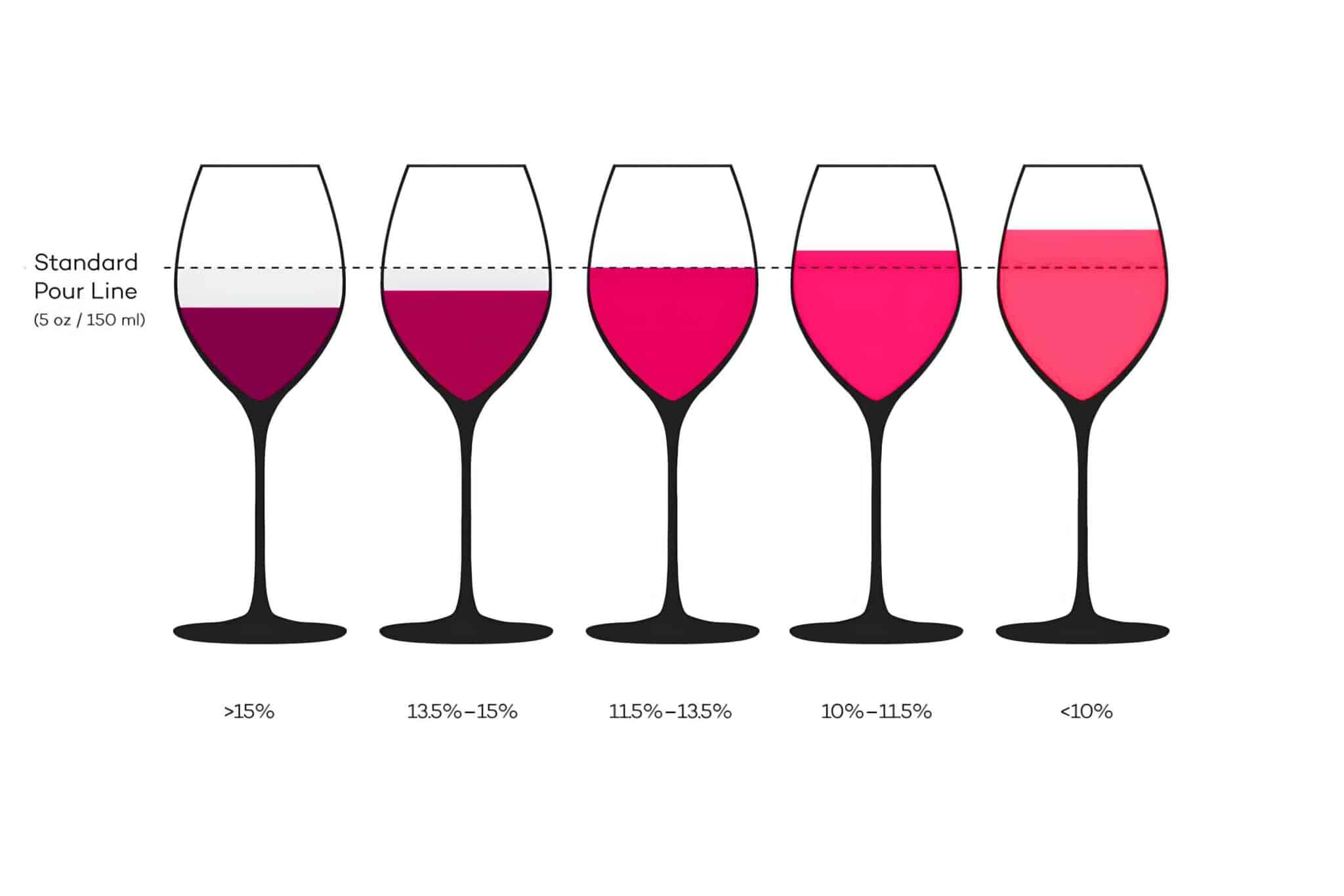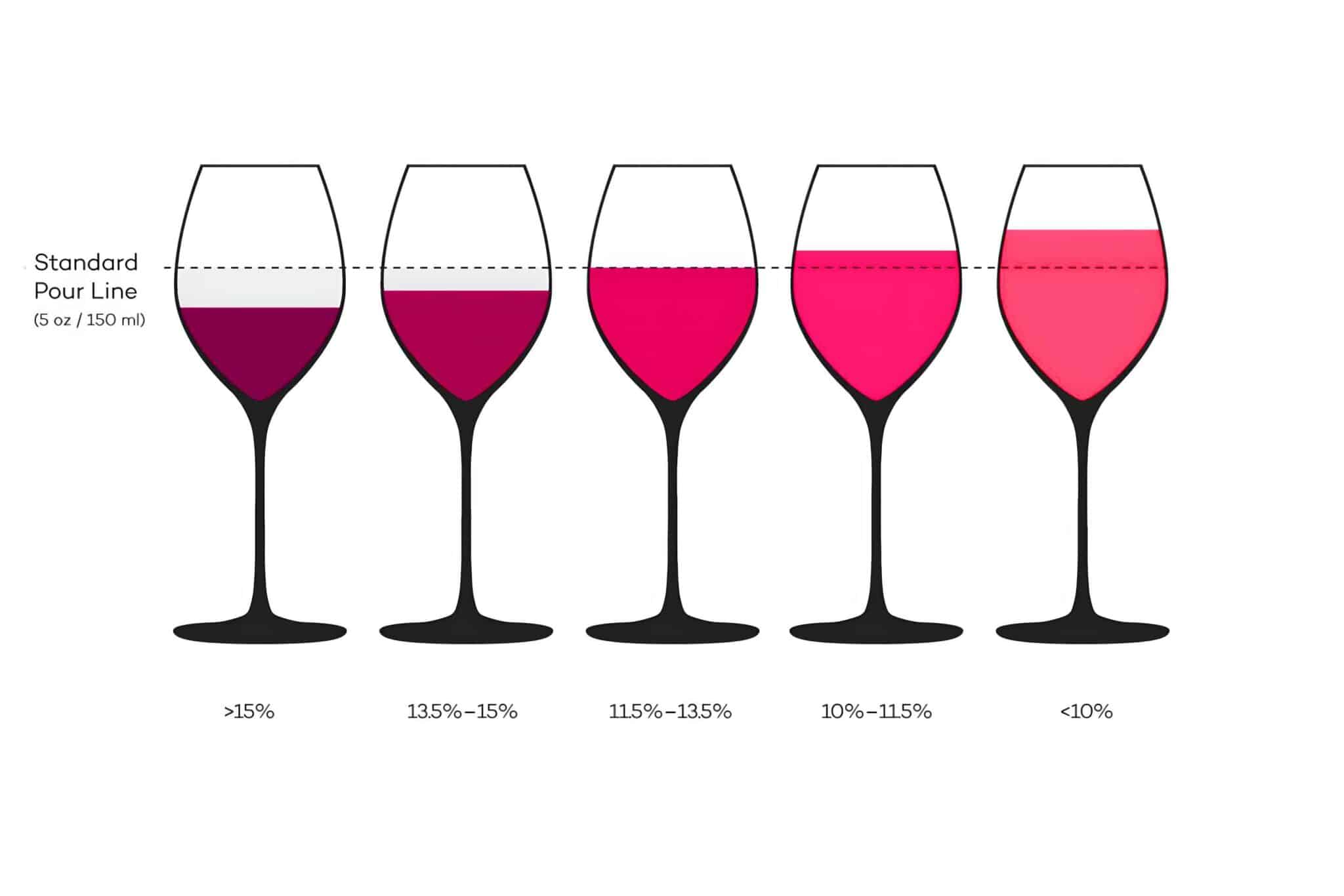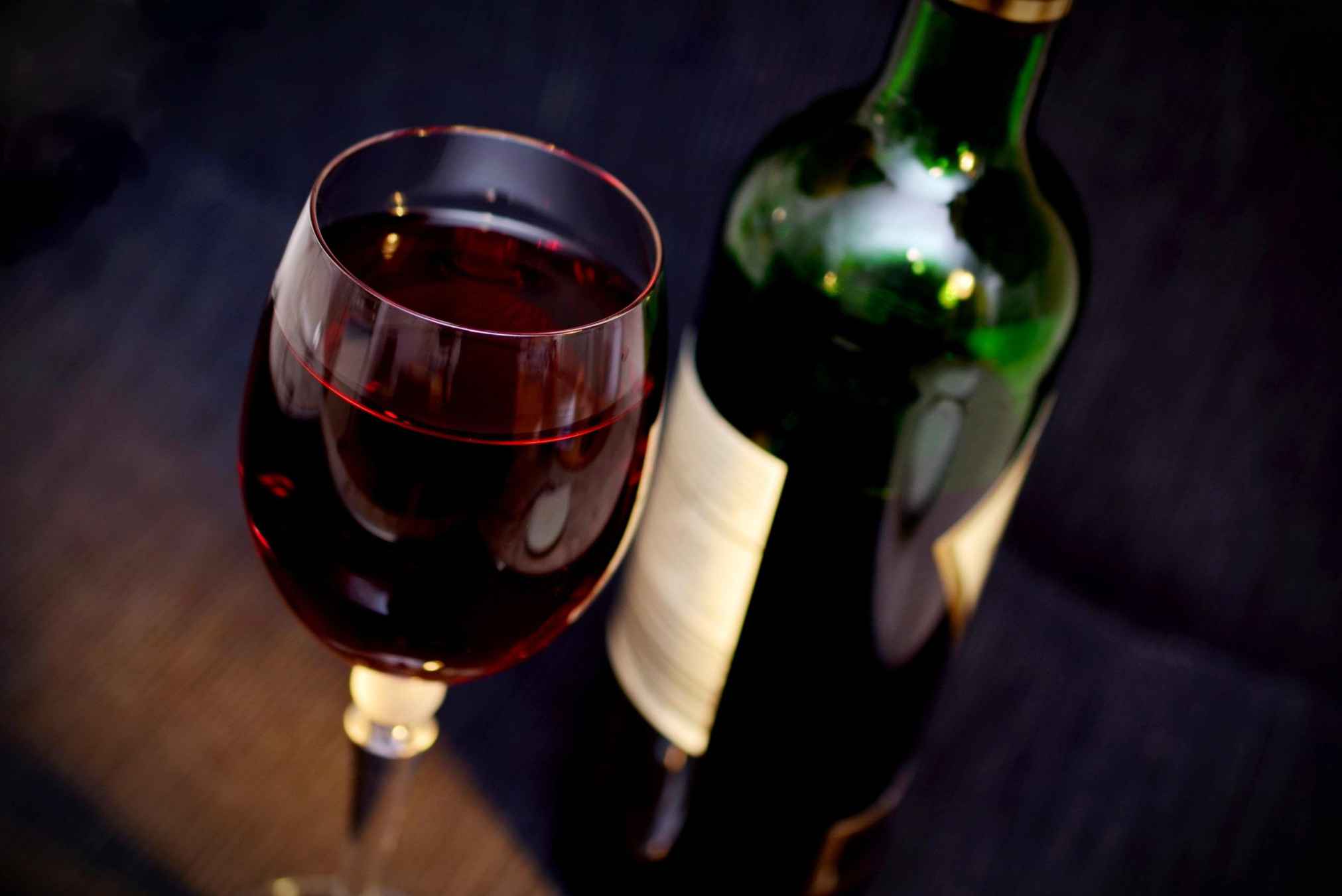A wine connoisseur will know all the basics regarding a bottle of wine. But, what if you are just an ordinary person who wants to have a glass for a particular occasion? Well, worry no more because we will help you figure out some of the basic information when it comes to wine.
Moreover, please remember that this blog will focus only on the information on how much is a serving of wine. When we say how much, it means measurement and not the price. We hope that doesn’t confuse you!
Introduction
We should consider many things when pouring a glass of wine. One of these is the measurement of the wine itself. So, we like to do you a favor and tell you that the standard wine pour should be 5 fluid ounces or 150 milliliters.
Although that is the ideal measurement, there are still considerations we should never forget when having a glass of wine. One of these is the alcohol percentage of the wine. Also, the size of the wine glass. The occasion is also another reason for changes.
Continue to read for further details!
How Much Is A Serving Of Wine Based On Alcohol Percentage?
Alcohol by volume or ABV is the term used to determine the alcohol percentage of an alcoholic beverage. Specifically, this is used for the ethanol content of the drink.
On average, a wine typically has a 12% ABV content. But, there are still available choices in the market that only contain 10% and some that have 18%. That is the spectrum for the wine ABV, so you should look out for those if you buy a bottle of wine.
Here’s a fun fact before we continue: the ABV of wine is higher than beer. So, it is understandable if a person who drinks wine gets dizzy faster than one who drinks beer.
Going back, as we said, a serving of wine also changes based on the ABV. The analogy here is simple: the lesser ABV, the higher measurement, the higher ABV, the lower measurement.
For example, if a wine is on the lowest to the average level, you can increase the measurement of wine in a glass. Usually, from 5 fluid ounces, you can add an extra ounce if you like. Just an ounce!
But, if the ABV surpasses the 12% average content, lessen the wine you will pour. Ideally, make it 3 to 4 fluid ounces. This way, you will not get drunk quickly. You’ll enjoy more glasses than usual too.
The highest ABV is found in white wines and red wines. You can look for these if you like a lot of alcohol in your drink. If not, then avoid purchasing these wines.
There is a way to compute the ABV content of a glass of wine. Multiplication is the key! But it is kind of confusing, though. So, we highly recommend using an Alcohol by Volume calculator instead.
How Much Is A Serving Of Wine Based On Glass Size?
As we know, there are different types of glasses when drinking wine. For this reason, there are also other measurements when pouring wine. Remember, no size fits all– especially when talking about wines. We cannot pour 5 fluid ounces of wine into a glass that holds lower than that.
We prepared a table for you to better understand it. Note that it only shows how many ounces a type of glass can hold and the corresponding ideal measurements. We are not forcing you to follow the ideal ones since we have our own preferences, but we are encouraging you.
| Wine Glasses | How many fluid ounces can it hold? | Ideal fluid ounce measurement |
| White wine glass | 8 to 12 fluid ounces | 5 fluid ounces |
| Red wine glass | 8 to 22 fluid ounces | 5 fluid ounces |
| Champagne flute & Sparkling wine glass | 5 to 8 fluid ounces
|
3 to 4 fluid ounces
|
| Dessert & fortified wine glass | 4 to 8 fluid ounces | 2 to 3 fluid ounces |
| Hock wine glass | 8 fluid ounces | 6.7 fluid ounces |
As you can see, there are adjustments to the measurements depending on how much the glass can hold.
How Much Is A Serving Of Wine Based On Occasion?
Yes, you read it right! The occasion and reason why you will drink a glass of wine is also a factor we should consider. Some of these occasions are wine tasting, dining out, dinner parties, and simple events.
- Wine tasting events: Have you ever gone to a wine-tasting event? If yes, you probably know that only small portions of wine are served on these occasions. Specifically, 2 fluid ounces only. You will have to taste many kinds of wine at wine tasting events. That is the reason why they only serve a little wine. You don’t want to be bloated or get drunk, right?
- Dining out: The staple serving of wine at restaurants is 5 to 6 fluid ounces. If you are intrigued about whether it is best to order a bottle of wine or a glass of wine in restaurants, we have the answer in the latter part of this post!
- Dinner parties: The ideal serving of wine for casual and relaxing dinner parties is 4 fluid ounces. This is because we should avoid making our guests too drunk. After all, most dinner parties happen because we want to bond with them, right? Do not hinder them from socializing. It is also good to follow this measurement if you don’t have enough wines available. 4 fluid ounces is equivalent to 6 glasses of wine. That’s enough to keep the party going!
- Simple & private events: Drinking wine with company is fun, but if you prefer enjoying it privately, it’s fine too. Simple and private events can include those we drink while or after we finish our meal. In this case, the standard 5 fluid ounces serving is appropriate. You will probably get 4 to 5 glasses if you drink the whole bottle. Just enough to set the mood while or after eating.
- Key Point: Again, the standard pour is 5 fluid ounces. Too much intake might harm your health. But, if you don’t want to follow this measurement, just ensure you will only pour a reasonable amount. Swirling the wine is essential too, and you won’t be able to do it if you let it overflow.
Here is a clip that will help you understand how much is a serving of wine:
Why Should I Follow The Right Serving Amount Of Wine?
No law will punish you for having an extra ounce of wine in your glass. But, the body that will take it might react.
A simple answer to why you should follow the correct serving amount of wine is this: for health purposes! Consuming too much wine will significantly affect your health– in a bad way.
Did you know that wine contains calories? Yes, that is correct; there are calories in each glass of wine. That’s why we should be mindful when drinking it. The more glasses of wine, the more calories.
How Much Wine Should I Drink A Day?
There is no doubt that you can drink wine every day. But the ultimate question is, how much should you drink?
According to U.S Dietary Guidelines for Americans, one glass of wine will be enough for women. Meanwhile, two glasses for men. For pregnant women, it is not good to drink any alcoholic beverage during pregnancy to ensure the baby’s safety.
Should I Buy A Glass Of Wine Or A Bottle Of Wine In A Restaurant?
This is probably the most crucial question a lot of people ask. To end your curiosity, we would say that the answer differs.
Buying a glass or a bottle of wine will be based on you and your circumstances. Sometimes, you only need a glass of wine to feel satisfied. Meanwhile, there are also times when you want the whole bottle to yourself. The situation is one factor you should consider.
The only thing that we are sure of is that most restaurants typically sell a glass of wine for 85% of the actual bottle. Some may even sell it for 100% of the price.
So, would you rather spend a significant amount on a glass of wine or a bottle? The decision is yours to make!
Summary
Again, there are three factors we should consider when pouring a glass of wine. The alcohol percentage, the glass size, and the occasion where you are in.
Most importantly and the one you should remember, the answer to the question of how much a serving of wine is 5 fluid ounces. We also answered some frequently asked questions for you.
That’s it! We are thrilled you stick with us and that you read all the information in this post. We hope you learned something!

George Moore, co-founder of Wine Flavor Guru, is a charismatic entrepreneur with a rich background in California’s wine industry. Alongside Sylvia, he transformed a Sonoma County vineyard into a source of premium wines. George’s expertise in sourcing exceptional grapes and his approachable style make wine appreciation both accessible and engaging.
